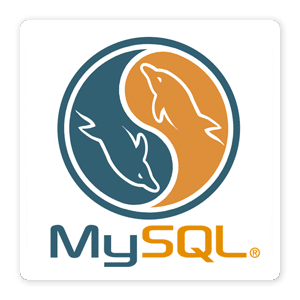
MySQL Download
MySQL for Windows, an open-source relational database system, offers robust performance, data consistency, and extensive application compatibility.
Software details
Software Description
MySQL for Windows is a relational database management system that enables you to store large amount of data in tabular form. Relations are established between various tables to show their dependency on each other. It is open source application and is property of Oracle Corporation. The name of software was kept by combining the name of its developer’s daughter with SQL. SQL is the abbreviation for Structured Query Language and is used for manipulation of data present in the database. It is a popular database used in many websites due to its fast speed, reliable performance, stability and detailed documentation support.
Benefits of Database:
Saving the data in MySQL has many advantages. You can store all data at a single place and access it via multiple applications. It provides data consistency and saves memory space. If data for each application is stored in separate files then lot of space will be wasted and in case of any modifications in data, a lot more efforts will be required. Furthermore, it is much easier now to show relationships between different sets of records and manipulate required data to bring it in desired format. Organizations can host their database on a server, so that all the authorized employees can access it without the need of storing it on each PC.
Applications:
It is an RDBMS that can be used in many types of applications. Most of the developers prefer it for saving data of websites including content, user details and product information for Ecommerce websites. WordPress, Joomla, and Drupal are popular applications making use of MySQL. Google, YouTube, Facebook and Twitter also use it on back-end. Since it is a free database, therefore no subscription charges are to be paid for using it. Moreover, its compatibility with a lot of computer languages and technologies especially PHP, Python and LAMP are the major reasons why it has become more common.
User Interface:
Downloading its setup allows you to insert, update, delete and fetch data via Command Line client interface. Since majority of users are more comfortable with graphical user interface, so its integration is made available for various efficient applications including phpMyAdmin, MySQL Workbench, HeidiSQL, Webmin and LibreOffice Base.
Features:
It is a multiuser database that offers support for tables, views and stored procedures. Nested queries can be written for fetching data from multiple tables or views with ease. For processing of data the user can select most appropriate storage engine from available option of InnoDB, Aria, CSV, Falcon, NDB, CassandraSE, TokuDB and many more. Triggers, cursors, indexing, searching and full Unicode support are other major features.
MySQL is a free and open source RDBMS that is available for almost every version of Windows operating system. Home users can use it for free while its paid version must be purchased for commercial use. It is compatible with many tools and technologies, so it is a preferred choice of developers. Whether you want to create a website for selling products or represent your organization, you can rely on its features.